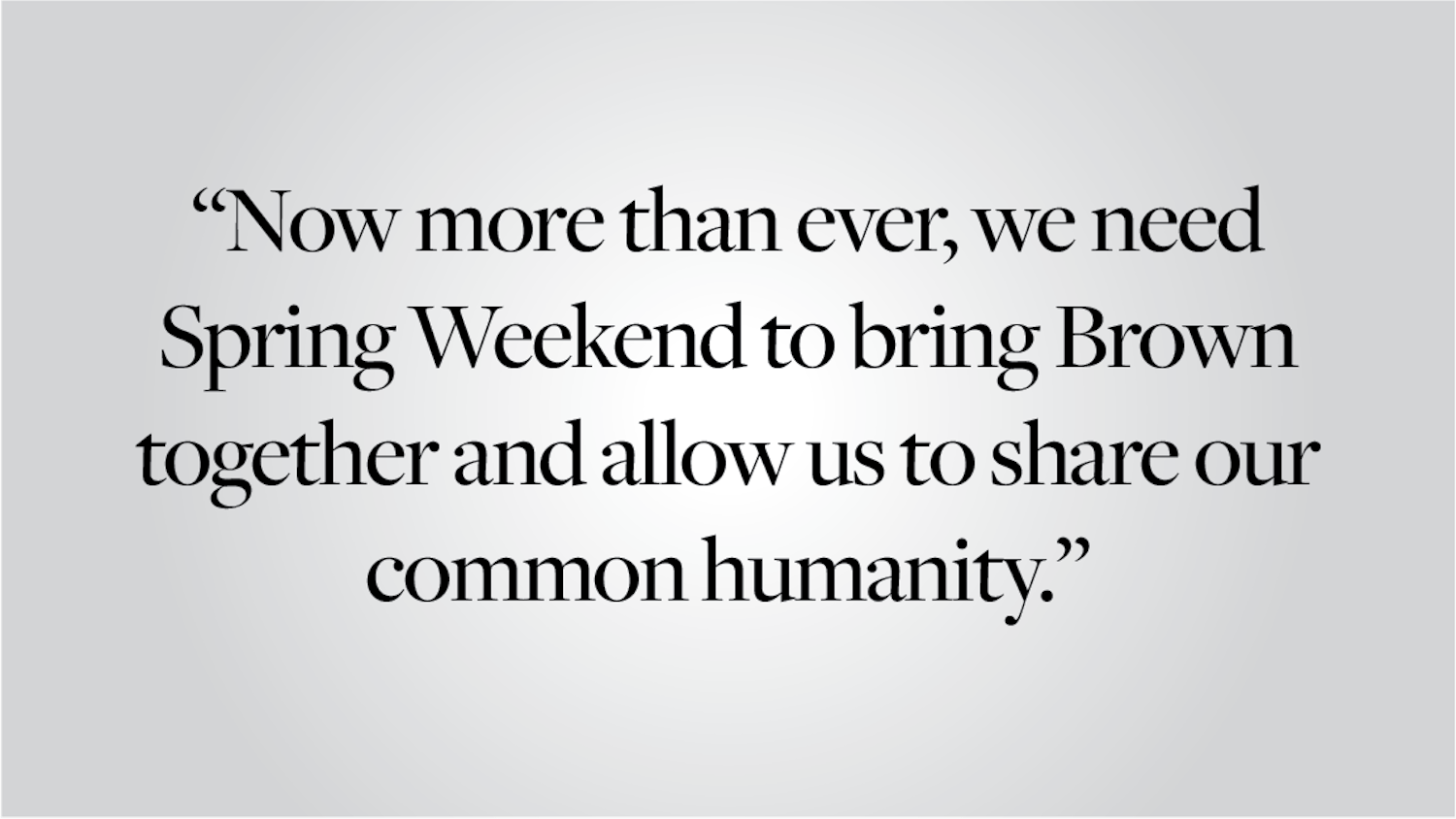On March 12, 1990, over 60 physically disabled individuals threw themselves out of their wheelchairs, abandoned their crutches and left their walkers behind, dragging themselves up the 78 steps of the capitol building in Washington, D.C., to protest the delay of the long-awaited passage of the Americans with Disabilities Act.
The passage of the ADA set in motion a dramatic transformation of the accessibility of institutions like Brown. It is the reason why I, as a wheelchair user, can attend today. It put into law the idea that individuals with disabilities have as much a right to live, work and take part in their communities, without compromise, as their able-bodied peers. This desire — to be fully integrated into an accessible, inclusive community — is one of the reasons why I was drawn to Brown.
Upon first reading The Herald’s Feb. 21 article regarding the proposed creation of a disability-focused student-run center, I was initially excited that my peers were addressing an issue that frequently surfaces in my daily life but remains largely undiscussed. However, upon reflection, I have come to the conclusion that I cannot support the creation of the proposed disability identity and cultural center.
First, I’d like to make something clear: I cannot speak for anyone other than myself, a physically disabled wheelchair user here at Brown. I cannot speak to the issue of psychological, mental or emotional challenges, which the proposed center focuses heavily on. However, it is my belief that for any disability, emphasizing the creation of a separate space actually exacerbates the social isolation and physical separation that those with disabilities at Brown already struggle to overcome.
To be sure, my experiences with the administration as a disabled student at Brown have been largely positive. I have found that Student and Employee Accessibility Services has done a wonderful job of helping me and many other students access this campus and have been prompt and thoughtful in resolving any issues I have experienced. But many of my experiences with social inclusivity — or rather the lack thereof — have been startling. This campus still has a long ways to go in meeting the ideals of the ADA, and the proposed disability identity and cultural center, while well-intentioned, is not a step forward on this journey.
The problem is not that the disabled don’t have a space or a feeling of community. The problem is that the spaces and culture of Brown itself are not living up to what the ADA envisioned: integration and inclusion of the disabled. Before coming to Brown, I never quite understood what it was like to navigate a space like this in a wheelchair. I wish I could explain how it feels to be stuck in the snow in my wheelchair, clearly unable to access the sidewalk, and a dozen students pass me before someone stops to help. I cannot tell you how many times I’ve been invited to attend an event, listen to a speaker or go to a party, only to have to turn the invitation down when I realize I will not be able to access the space.
The social challenges I face are coupled, inevitably, with the physical challenges of being a wheelchair user. The University has multiple buildings that remain partially or completely inaccessible to me. There are many residential housing complexes in which I can never live or visit a friend. The elevator in my dorm has broken down an average of twice a month since I have lived there, and from the time it breaks down until it is fixed, I cannot go to class, get a meal or do anything, without someone being willing to assist me. When our minority peer counselors hold workshops — which first-years like myself are so encouraged to attend — on racism, sexism, ableism and the like, only the ableism talk was held in a wheelchair-accessible space, an irony I have been quietly disturbed by.
Many people have been kind and helpful to me in these situations during my time at Brown. But many more have not been, and I point this out not to be accusatory but to express to our community that inclusivity is still just an ideal, not a reality, for the physically disabled on this campus. That is what cements my opposition to the proposed disability center. It is my firm belief that I and my physically disabled peers must remain visible, and have our accommodations remain visible as well, to the wider Brown community if we expect Brown to fully achieve the ideal of inclusivity.
The only way to break down the social and physical barriers between me and my peers is if they know me, see me and begin to see opportunities to be an ally to me in their spaces. I recognize that most people do not interact with someone in a wheelchair on a daily basis, so sometimes it may seem difficult to know how to help or to even remember to think about being accomodating in the first place. But I firmly believe that the only way people who haven’t had this exposure can develop real consideration for disabled people is to actively try to understand what their own role is in facilitating my inclusion in public, social and academic spaces.
I don’t want to go to a special building to access my community at Brown, because my community is Brown. I want and deserve to be accommodated in the spaces that everybody else can access and to feel just as much a part of the wider community. The letter of the ADA gives me that right, and the spirit of the ADA means that my peers have a responsibility to share the space with me and help me access it when they can.
I was also startled to notice that the proposal, as described in The Herald on two separate occasions, primarily focused on psychological or emotional disability and mental illness and mentioned physical disability either briefly or not at all. As disabled students, we are individual actors with distinctive experiences of disability — and without our individual voices being included in the conversation, I am concerned that our wants and needs will be misidentified or left out of the conversation and inaccurately conflated or labeled.
It is my firm belief that a wider culture of inclusivity must be fostered at Brown before any progress can be made and that the proposed center undermines that effort. Before the ADA was enacted, disabled people were often placed in our “own” spaces — separate, designated places to attend school, develop a sense of community and live “safely” without our needed accommodations causing inconveniences to the wider world. I do not believe this model of addressing the needs of disabled people should be revisited. While I have no problem with the resources the center would provide, I strongly encourage the student group to consider providing them in already existing spaces on campus.
I stand with those disabled activists who, almost thirty years ago, did the impossible to struggle up the steps of the halls of power in our country. I stand with their belief that access to every space is as much my right as that of an able-bodied person, and that integration, not isolation, is the only dignified and adequate form of accommodation. The de facto physical and social segregation that keeps me from accessing this campus like a typical student is profound and the greatest challenge we need to overcome if we want our community here to be disability inclusive.
Krista Stapleford ’21 can be reached at krista_stapleford@brown.edu. Please send responses to this opinion to letters@browndailyherald.com and op-eds to opinions@browndailyherald.com.




